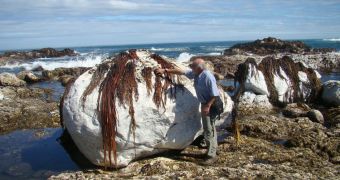On February 27, 2010 a magnitude 8.8 earthquake struck south-central Chile, causing a lot of property damage and more than 500 casualties. Now, researchers say that they are seeing unexpected effects of the natural disaster.
An analysis of sandy beaches throughout the affected area revealed significant restoration of lost species and ecosystems. This is the first investigation to provide a quantitative view on how tremors of this magnitude influence ecosystems and related habitats.
In addition to providing a unique view of this event, the research also offered a preview of what will happen when climate change will raise sea levels around the world. Climatologists believe that similar effects will take place on all beaches by the end of the century.
The new study was carried out by investigators with the Southern University of Chile and the University of California in Santa Barbara (UCSB). The team had access to data covering the sandy beaches, collected both before and after the earthquake occurred.
The ecological impacts of tremors are relatively unstudied, due to the fact that it's very hard to predict where the natural disaster will strike. Scientists got lucky, so to speak, considering the location of the event. Truth be told, the disaster could have claimed many more lives, had it struck elsewhere.
“So often you think of earthquakes as causing total devastation, and adding a tsunami on top of that is a major catastrophe for coastal ecosystems,” says researcher Jenny Dugan, who holds an appointment as a biologist at UCSB.
“As expected, we saw high mortality of intertidal life on beaches and rocky shores, but the ecological recovery at some of our sandy beach sites was remarkable,” she goes on to say. The investigation was supported by funds from the US National Science Foundation's (NSF).
By late January 2010, the expert says, her team had surveyed 9 beaches in Chile, as well as several in Santa Barbara, in a bid to understand how man-made structures such as sea walls were influencing seaside ecosystems and habitats. The earthquake hit the next month.
This presented the investigators with a unique opportunity of access to relevant data concerning these 9 beaches. No other team had access to this type of information before, at such high levels of resolution.
“Plants are coming back in places where there haven't been plants, as far as we know, for a very long time. The earthquake created sandy beach habitat where it had been lost. This is not the initial ecological response you might expect from a major earthquake and tsunami,” Dugan concludes.

 14 DAY TRIAL //
14 DAY TRIAL //